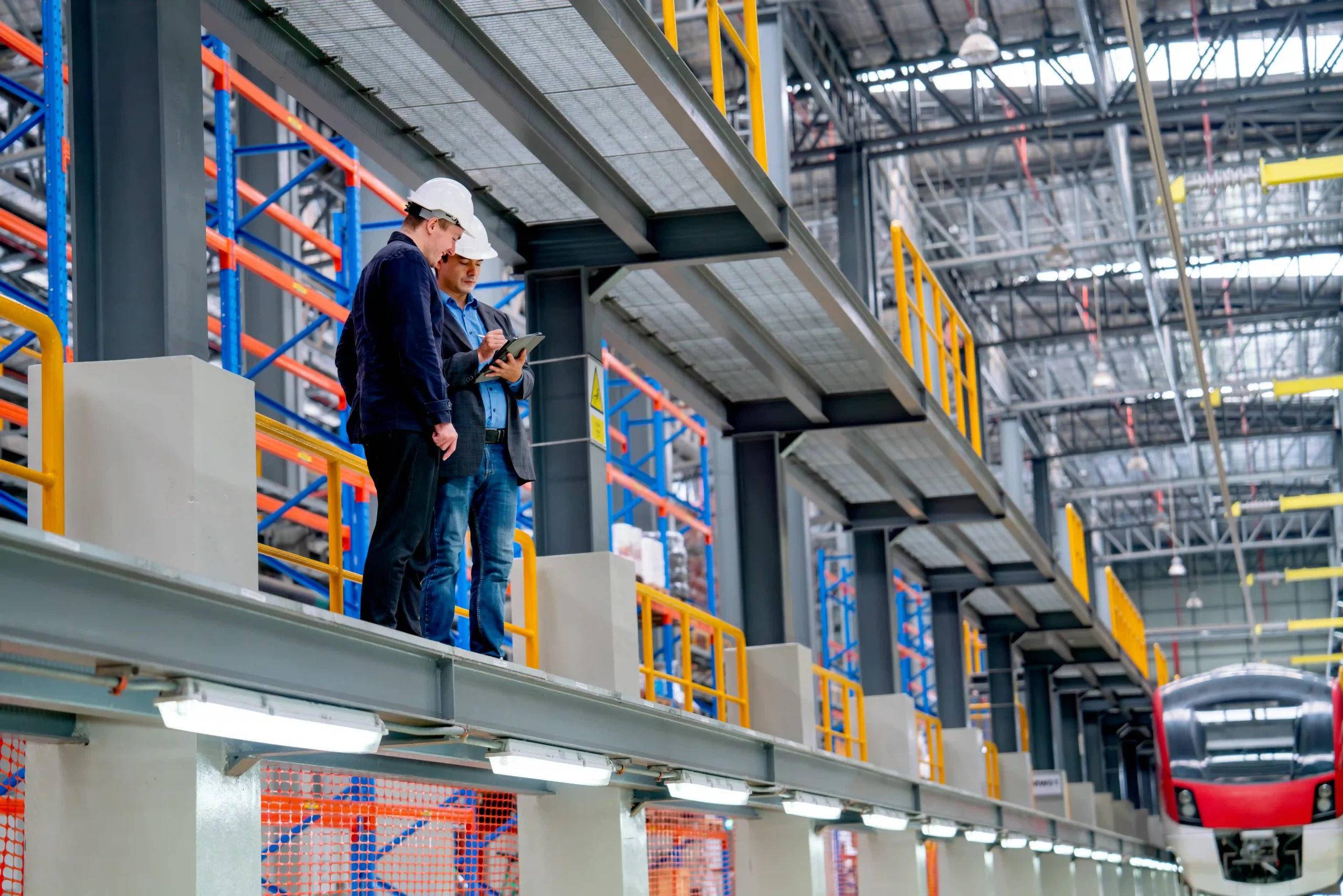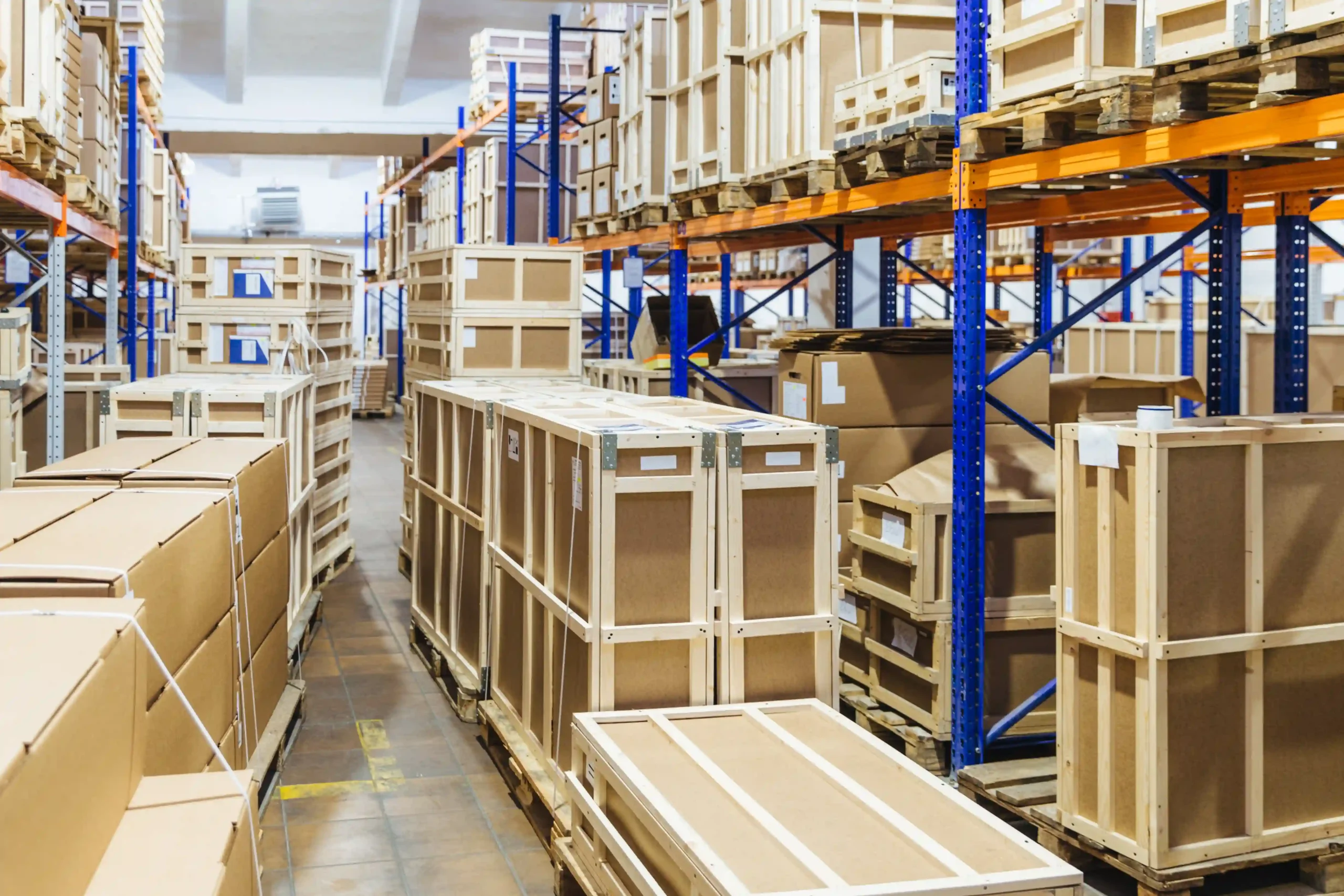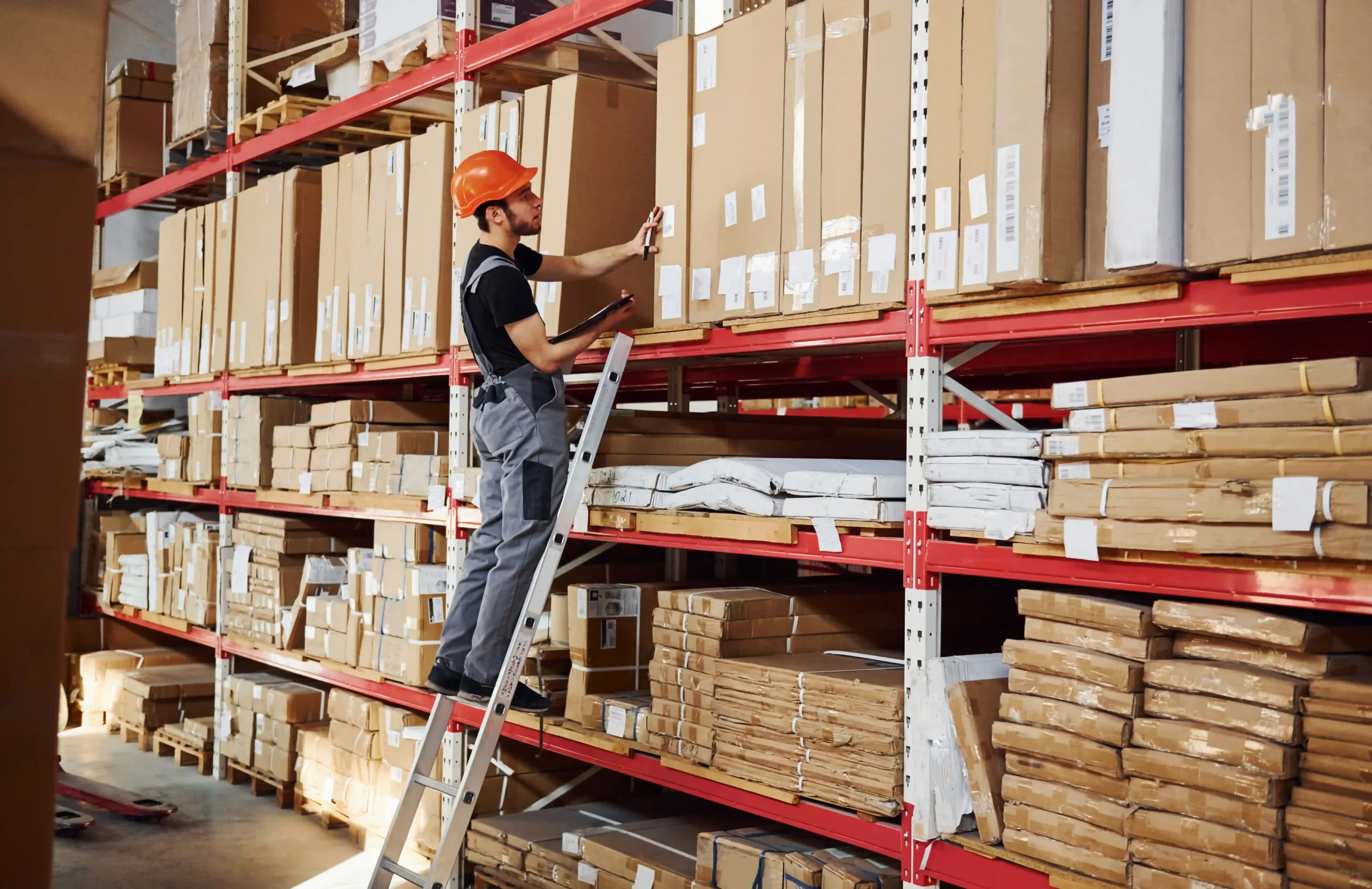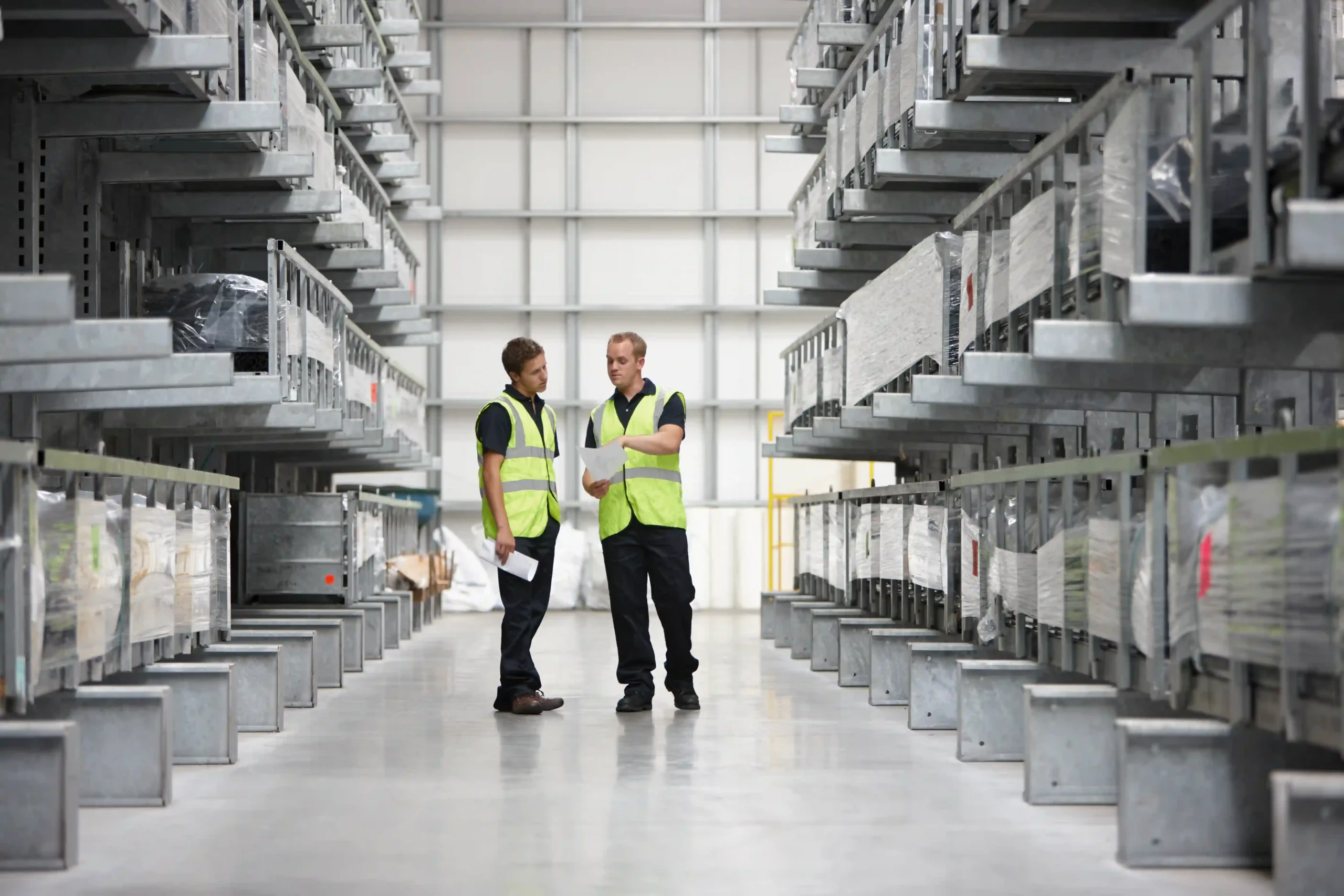In the world of logistics and warehouse management, space is one of the most valuable assets. Warehouse vertical storage solutions refer to the practice of using vertical space—floor to ceiling—to store goods instead of relying solely on traditional horizontal shelving.
By stacking upwards rather than outwards, businesses can increase storage capacity without expanding their warehouse footprint. This method optimizes cubic space, ensuring that every inch of available height is used effectively.
Over the last three decades, Tri-Link FTZ has worked with businesses struggling to manage inventory in limited space. Many of our clients initially relied on traditional shelving, leading to cluttered aisles, inefficient workflows, and costly expansions.
When they switched to warehouse vertical storage solutions, they saw immediate improvements in organization, retrieval speed, and overall efficiency. Whether it’s a retail fulfillment center, automotive parts distributor, or pharmaceutical warehouse, every industry benefits from vertical storage in unique ways.

Space constraints are a growing challenge for businesses as e-commerce continues to expand. The cost of real estate is rising, and increasing warehouse space through expansion isn’t always feasible.
Warehouse vertical storage solutions provide a cost-effective way to maximize storage without increasing a building’s square footage. Beyond just saving space, vertical storage improves workflow efficiency.
Imagine a warehouse where employees spend less time walking long aisles and more time efficiently retrieving products. Automated vertical storage solutions like ASRS or VLMs bring inventory directly to the picker, eliminating unnecessary movement and improving productivity.
From our experience at Tri-Link FTZ, businesses that invest in warehouse vertical storage solutions see a significant drop in operating costs. Not only does it reduce labor costs, but it also enhances safety by eliminating cluttered floor spaces and minimizing heavy lifting.
With better space utilization and streamlined workflows, businesses experience faster order fulfillment and improved accuracy.
Choosing the right warehouse vertical storage solutions depends on your industry, storage needs, and available warehouse height. Over the years, we have helped businesses across multiple sectors determine the best system for their operations.
Below are the most effective vertical storage solutions used in modern warehouses.
Pallet racking is the most common warehouse vertical storage solution for bulk storage. These racks allow businesses to store goods on stacked pallets, maximizing overhead space.
A mezzanine is an elevated platform that doubles or even triples warehouse storage capacity. These structures are particularly useful for warehouses with high ceilings but limited floor space.
At Tri-Link FTZ, we’ve worked with clients who needed extra workspace without the cost of warehouse expansion. A well-planned mezzanine can add an entirely new level of storage without disrupting existing operations.
VLMs are automated storage systems that store products in trays stacked vertically. These trays are retrieved and delivered to workers at ground level, eliminating unnecessary movement.
They are perfect for industries that handle small, high-value inventory such as electronics, pharmaceuticals, and automotive parts.
ASRS solutions use robotics and automation to handle inventory retrieval, reducing labor costs and improving efficiency. We’ve seen businesses using ASRS experience a 30% increase in picking speed while cutting warehouse labor by half.
For businesses storing long, bulky items like pipes, lumber, or steel, cantilever racks provide the perfect solution. These racks have adjustable arms that allow for flexible storage configurations, making them a favorite in the construction and manufacturing industries.
If your business isn’t using warehouse vertical storage solutions, you could be wasting valuable warehouse space. The benefits of implementing a vertical storage system go beyond just space-saving.

To demonstrate the power of warehouse vertical storage solutions, let’s look at a comparison:
Storage Method | Storage Capacity Per 10,000 Sq. Ft. | Space Utilization Efficiency |
Traditional Shelving | 50% | Low |
Pallet Racking | 75% | Moderate |
Mezzanines | 150% | High |
ASRS | 200% | Very High |
From our own experience, businesses using warehouse vertical storage solutions have saved up to 60% of floor space while increasing inventory capacity by over 200%.
One of the most common concerns we hear from business owners is whether investing in warehouse vertical storage solutions is worth the cost. The short answer is yes—but let’s break it down.
Most vertical storage systems, especially ASRS and VLMs, come with an upfront investment. However, when you calculate the return on investment (ROI), the savings on space, labor, and operational efficiency far outweigh the cost.
On average, businesses that implement automated vertical storage recover their investment within 2-5 years due to increased productivity and reduced overhead costs. At Tri-Link FTZ, we’ve worked with clients who initially hesitated to invest in vertical storage but saw a 30-40% improvement in overall warehouse performance after implementation.
Whether it’s reducing fulfillment time, eliminating storage inefficiencies, or improving workflow, warehouse vertical storage solutions deliver long-term value.
While warehouse vertical storage solutions offer significant advantages, businesses may face challenges during implementation. At Tri-Link FTZ, we’ve helped countless businesses navigate these hurdles and optimize their warehouse storage.
One of the biggest concerns is the initial investment cost. Automated vertical storage systems like ASRS and VLMs require a significant upfront expense, which can deter small businesses.
However, businesses should consider the long-term savings in labor, space utilization, and operational efficiency. Financing options, leasing programs, and phased implementation strategies can help spread out costs.
Another challenge is warehouse ceiling height limitations. Not all warehouses are designed with vertical expansion in mind.
Before implementing a warehouse vertical storage solution, businesses should evaluate structural limitations, ventilation systems, and fire safety regulations. If ceiling height is restricted, solutions like mezzanines, mobile shelving, or high-density racking systems may be more suitable.
Employee adaptation is another common issue. Many warehouses have relied on manual picking and traditional shelving for decades, making the transition to automation challenging.
Training programs and gradual integration can help employees feel comfortable with new systems. At Tri-Link FTZ, we encourage our clients to implement step-by-step automation, starting with semi-automated solutions before transitioning fully to ASRS or AMRs.
Lastly, maintenance and reliability are essential for keeping vertical storage systems running smoothly. Regular inspections, predictive maintenance, and software updates prevent unexpected downtime.
Warehouses that invest in preventative maintenance programs see a 30% reduction in equipment failure rates. Read more here.

At Tri-Link FTZ, we have spent 35 years helping businesses improve their warehouse efficiency. Over time, we’ve developed a list of best practices that ensure successful warehouse vertical storage solutions implementation.
The first step is conducting a warehouse space analysis. Businesses need to evaluate their current storage layout, order profiles, and inventory volume.
Understanding product dimensions, weight, and picking frequency helps determine which vertical storage solution is best suited for their needs. Next, businesses should choose between manual vs. automated vertical storage.
If the goal is to optimize warehouse space with minimal investment, pallet racking or mezzanines may be the best choice. For companies looking to scale operations and improve picking speed, ASRS and VLMs offer the most benefits.
Warehouse managers should also prioritize workflow optimization. The best storage system in the world won’t be effective if warehouse processes aren’t aligned.
Optimizing picking paths, reducing travel time, and integrating automation with WMS software can significantly boost efficiency. Another key best practice is ensuring proper inventory labeling and tracking.
Businesses should invest in barcode scanning, RFID technology, or IoT-enabled inventory management to streamline warehouse operations. Labeling shelves and using real-time tracking improves accuracy and reduces misplacements.
Lastly, businesses should plan for scalability. The best warehouse vertical storage solutions should accommodate future growth.
Choosing modular systems that can be expanded or reconfigured ensures long-term flexibility. Investing in high-density storage solutions can future-proof warehouse operations.
Automation plays a crucial role in modern warehouse vertical storage solutions. Traditional warehouses rely on manual labor for storage and retrieval, but automation has revolutionized how businesses handle inventory.
One of the most popular automated solutions is ASRS (Automated Storage and Retrieval Systems). These systems use robotic cranes and conveyors to retrieve and store inventory with minimal human intervention.
ASRS significantly reduces picking errors and improves order accuracy. Businesses using ASRS have reported up to 85% improvement in picking efficiency.
Vertical Lift Modules (VLMs) are another innovative solution. These enclosed storage systems automatically retrieve trays and deliver them to warehouse workers at an ergonomic height.
VLMs reduce warehouse footprint by 75% compared to traditional shelving. In addition to storage systems, Autonomous Mobile Robots (AMRs) are transforming warehouse efficiency.
AMRs navigate through warehouse aisles, retrieving products and transporting them to packing stations. This reduces the need for manual labor and improves workflow efficiency.
At Tri-Link FTZ, we’ve helped clients integrate smart automation with warehouse management systems (WMS) to improve real-time inventory tracking. Businesses that integrate AI-driven storage solutions can optimize inventory flow and reduce stockouts.
With AI and IoT-enabled smart warehousing, predictive analytics can help businesses forecast demand and adjust storage allocation accordingly. Automation isn’t just about convenience—it’s the future of warehouse storage.
Many businesses have successfully transitioned to warehouse vertical storage solutions, and their success stories highlight the transformative power of vertical storage. One of our clients, a retail distribution center, was struggling with inventory overflow and slow order fulfillment.
After implementing mezzanines and automated picking systems, their warehouse capacity increased by 65%, and order processing time was cut in half. Another example comes from an automotive parts supplier.
They needed a solution to store thousands of small parts while improving picking accuracy. After adopting VLMs and RFID tracking, their inventory error rate dropped from 5% to 0.5%, significantly reducing returns and lost revenue.
A pharmaceutical logistics provider turned to us to help them optimize their cold storage facility. With temperature-sensitive products requiring precise handling, they implemented high-density ASRS systems, allowing them to store 40% more inventory in the same footprint.
Each of these case studies proves that warehouse vertical storage solutions aren’t just about saving space—they’re about enhancing productivity, improving accuracy, and reducing costs.

If your business is ready to implement warehouse vertical storage solutions, the first step is to evaluate your current warehouse layout, inventory flow, and storage needs. Conducting a thorough warehouse audit will help determine which vertical storage system best fits your operation.
Next, consider budget and ROI. While automated solutions come with a higher upfront cost, they often provide significant long-term savings.
Businesses should assess potential cost reductions in labor, space utilization, and order fulfillment speed. Choosing a trusted third-party logistics (3PL) provider like Tri-Link FTZ can make all the difference.
With our 35+ years of experience in logistics and foreign trade zone services, we help businesses design, implement, and optimize warehouse vertical storage solutions tailored to their needs. If you’re unsure where to begin, reach out to us for a warehouse consultation.
We can help you determine the best approach to maximize storage capacity, streamline operations, and future-proof your supply chain.
Warehouse storage is no longer just about stacking shelves—it’s about intelligent, space-efficient solutions that maximize productivity. As warehouse space becomes more expensive and demand for faster order fulfillment increases, businesses must adapt to smarter storage methods.
Warehouse vertical storage solutions are a game-changer, helping businesses reduce costs, improve workflow efficiency, and enhance inventory management. Whether you’re looking for pallet racking, mezzanines, VLMs, or fully automated ASRS systems, the key is choosing a system that aligns with your growth strategy.
At Tri-Link FTZ, we specialize in helping businesses transition to high-efficiency warehouse solutions. If you’re ready to take your warehouse storage to the next level, reach out to us today.
Share this article
We have other resources available upon request as well as one-on-one support and personalized answers, just like our services.
Simply contact us anytime and we’ll get back to you to answer your questions and provide meaningful answers that show you how Tri-Link supports your logistics, reduces costs, and accelerates efficiency.
Tri-Link delivers exceptional FTZ and 3PL services tailored to your global trade needs.
Our solutions combine innovation, quality, and efficiency to exceed your expectations and meet your specific requirements.